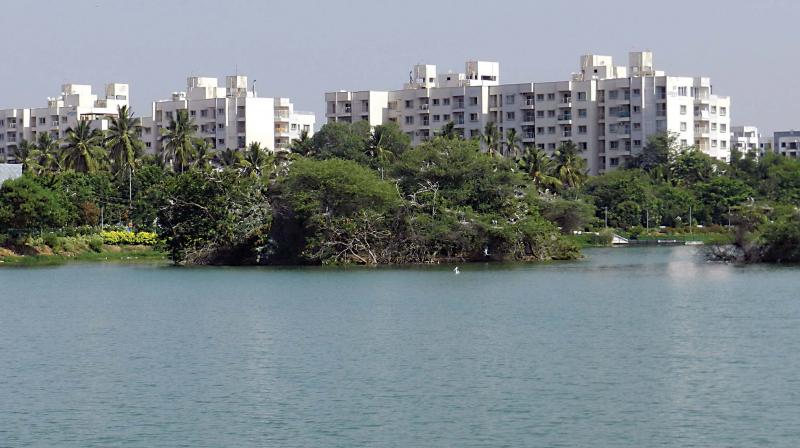Save our water bodies, emulate Jakkur lakers

Centuries ago, people had the vision and wisdom to create water bodies in the terrain that we now call Bengaluru. Bunds or earthen dams were built across natural valleys and these became water storage zones during the monsoons, which were used essentially for irrigation.
The water bodies were linked via large canals or rajakaluves, which carried rain water from an upper lake to a lower. And a network of smaller canals connected to the rajakaluves, emptied into the lake too. As one lake overflowed, it would fill the next. Rain water flowed from North to South-East and North to South-West, along the natural gradient of the land.
Each of Bengaluru’s three main valley systems - Hebbal, Koramangala-Challaghatta, Vrishbhavathi - had a chain of lakes/reservoirs, which besides supporting diverse life forms in and around them, played an integral role in recharging ground water, aiding irrigation and cooling the environment. In addition, the fresh water created an important ecosystem in the city and controlled pollution by trapping dust and heat.
But over the centuries, and more recently, over the past two decades, Bengaluru has seen unprecedented, unplanned growth with an influx of people into the city and unbridled construction and infrastructure development.
The poor solid waste, sewage and construction debris management, saw them end up in our lakes ,turning them gradually into cesspools. Meanwhile, the hunger for real estate led to encroachment and the disappearance of other lakes.
Headlines were made when the Bellandur and Varthur lakes started to foam and froth and even caught fire. But all is not doom and gloom. Thanks to concerted citizen action, an alert media and the intervention of courts, many a lake has been fenced, cleaned, desilted and protected.
An excellent example of an Integrated Urban Water Management Plan is Jakkur lake, which has been revived by the citizen guardian group, Jalaposhan, that received a National Water Mission Award recently for its efforts.
The group drew up a lake vision plan and worked with the BDA, the BBMP, the BWSSB and the fisheries department to make sure that the lake was revived into a beautiful ecological spot, providing livelihood to fishermen, grass-cutters and cattle rearers. Birds such as the pelican and painted stork now flock to the islands dotting it.
Unlike other lakes, Jakkur has taken responsibility for the sewage generated in its upper catchment area, which is treated in a 15 million litre plant operated by the BWSSB. This treated waste water enters the lake through a large constructed wetland, which polishes the water further , keeps the lake full to the brim and feeds the downstream Rachenahalli lake too.
With the help of volunteers and the state, a butterfly garden has been created around the lake along with a permaculture garden, where vegetables grow and a heritage zone that allows small mammals and reptiles to flourish. An education cell teaches people,especially children, the value of wetlands and water bodies in a city.
The rejuvenation of the lake means people not only have a recreation, cultural and learning spot now, but can be confident of their future needs being met too, as they have been taken care of by recharging of the groundwater around it.
Challenges, however, remain in terms of untreated waste water still finding its way into the lake . But thanks to support from the political leadership, the corporators , the local MLA and MP and institutional interest, this problem too should be sorted out over time.
The key lesson to be learnt from the experience is that cooperation between various stakeholders with a common vision for a vibrant lake ecosystem, can lead to reuse of treated waste water and provide hope to a city allegedly, running out of water.
—The author is a water expert

